Cultural and architectural Tourism is a scenario that familiarises a city for an unfamiliar audience and gains identity for its citizens. At the same time, Architecture is an expression of the lifestyle and spirit of the epochs and cultures in which it arises. Both Architecture and tourism have been interlinked since time immemorial. Architecture has been a significant aspect of crowd appeal, while tourism has been shaped by architectural considerations to endure through the test of time, as well as financial constraints. Both architectural tourism and cultural tourism operate symbolically to break down the unfamiliarity of any culture and provide an understanding of the original essence of the place, its culture, and its evolution through a chronological approach.
Tourism is one of the fastest-growing sectors in the world, particularly in terms of economic, technological, and social transformations. The mutual relationship between architecture and the tourism industry has been evident since ancient times, where architecture has played a significant role as a tourist attraction. Temples have been built in honour of the gods, grand theatres, stadiums, such as the Colosseum, and other monumental public buildings that attracted large crowds, as they represented the culture and society of the time. Architecture serves as a means of expression for the cultural diversity and innovative potential of a region.
The importance of architectural tourism lies in its direct contribution to the preservation of architecture. Tourism and architecture have never been as closely connected as in this case. There has been a prominent surge in Heritage Tourism. This has sparked a sudden interest in ancient history and heritage. Thus, it is apparent that tourists turn to architecture to quench their thirst for the history and heritage of a place. With the outburst of the tourism industry, these places are now being identified, restored, and promoted vigorously.
The tourism sector is a prominent source of income for many countries. To promote the growth of architecture-based tourism, sufficient funds are invested in maintaining historic places. And their local heritage and architectural significance. This enhances the city's infrastructure and connectivity, offering improved holiday facilities and ultimately providing a more comfortable experience for tourists. This, in turn, also benefits the locals.
Tourism has been one of the leading sectors in employing citizens. Being a service sector, it requires a large number of people to manage the main train and promote modern architectural tourism trends. From providing transportation and accommodation to food-guided tours and maintenance, tourism offers numerous employment opportunities and has been a boon to the local community. Tourism is just as crucial for locals as it is for tourists. It strengthens the identity of the citizen, making them feel connected to the place and reassures their affinity to their land. Tourism has the potential to serve as a remedy for poverty. It is one of the largest service sectors that promotes the growth of both the physical and metaphysical aspects of the user experience. It has also helped improve the lifestyle of local artisans and artists, and in turn, the art itself; this again closes the circle of mutual success that signifies the role of architecture in tourism.
Role of Architecture in Tourism
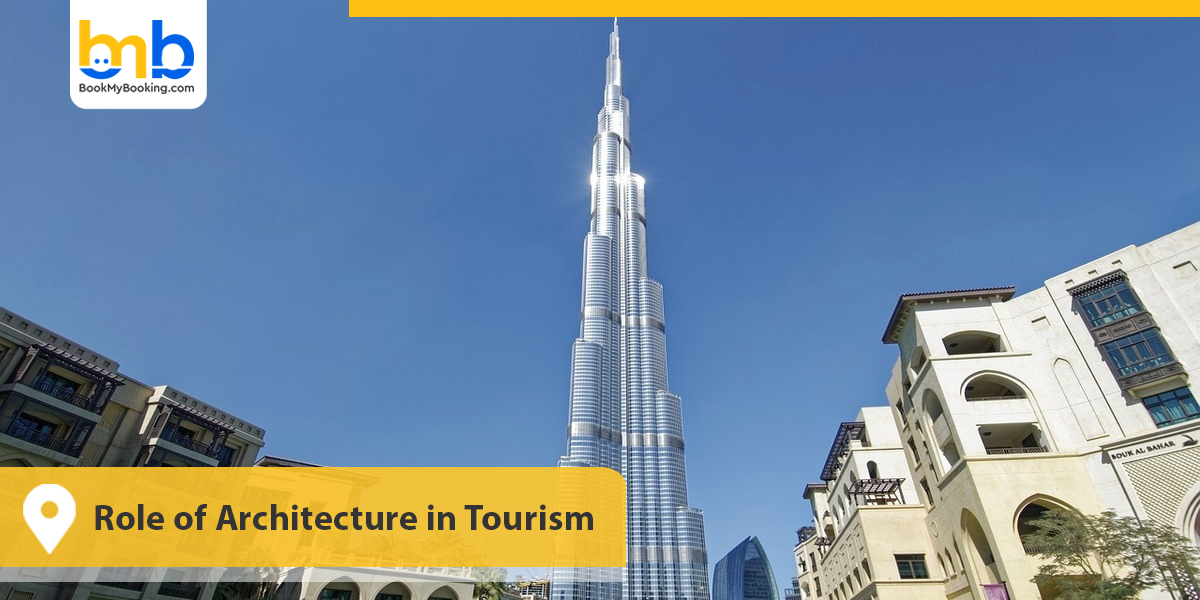
Architecture plays a vital role in tourism by shaping the identity and appeal of destinations.—iconic structures, historic monuments and modern marvels that attract travellers seeking cultural, historical and aesthetic experiences. From ancient wonders such as pyramids to futuristic structures like the Burj Khalifa, architecture symbolises the essence of a place, telling the stories of its heritage and innovation. It creates a memorable horizon, supports cultural pride and improves visitor experiences through museums, temples, palaces and urban designs. Architectural Tourism not only attracts global audiences but also greatly appreciates human creativity in the context of economic development, cultural exchange, and across generations.
Architecture and the Tourism Industry

Architecture and the tourism industry are deeply interconnected, as built environments often serve as the primary attraction for travellers. Historical monuments, religious structures, palaces and modern skyscrapers incarcerate cultural identity and become a symbol of a destination. Tourists are designed to explore architectural wonders for their beauty, crafts and historical significance. In addition, innovative urban designs, environmentally friendly buildings and eco-friendly cityscapes improve urban experiences and attract visitors. From the Taj Mahal to the Eiffel Tower, architectural travel experiences fuel global tourism, economic development, cultural preservation, and cross-cultural appreciation. It converts cities into living museums and bridges the past with modern ambitions.
20 Must-Visit Destinations: Architectural Tourism Guide
1. Metz, France
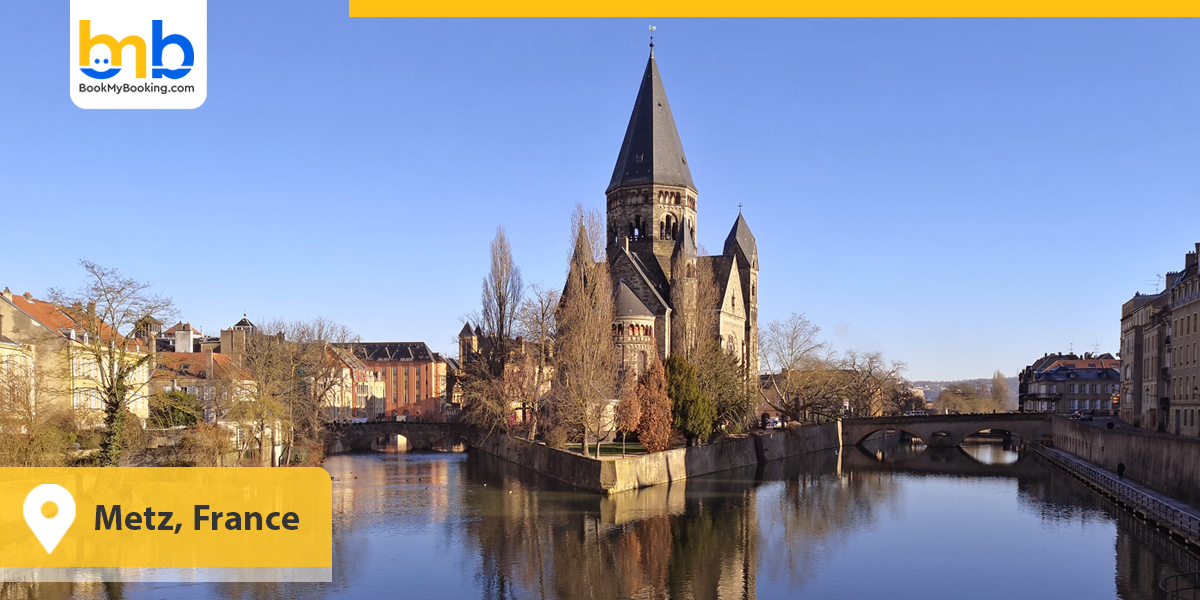
This northeastern French city is one of the best cities for architectural tourism, with a harmonious interplay of different architectural styles. They complement each other effortlessly. The city's 2000-year-old architecture unfolds like a storybook, from ancient Roman ruins and the soaring Gothic grandeur of Saint Station to the futuristic curves of the Centre Pompidou Metz. The city is a haven for architects, whose week-long travel is a source of inspiration.
2. Budapest, Hungary

This Hungarian capital, an architectural landmark for tourists, is bisected by the River Danube, is an amalgamation of two islands connected by a bridge: the hilly Buda district and the flat Pest district. The city's skyline is a beautiful blend of Gothic spires, Baroque domes, Art Nouveau facades, and a few modernist interventions, making it a living classroom of architectural evolution. From the grandeur of th Hungarian Parliament Building and the neo-Gothic beauty of Matthias Church, Budapest showcases a deep respect for craft and ornamentation.
3. New Orleans, USA

Famous for its cemeteries and voodoo culture, it is also a notable destination for architectural tourism. The rich history of the city's architectural styles reflects a deep cultural amalgamation of French, Spanish, Creole and African influences. The French intervention has left a remarkable mark on the city's vivacious neighbourhoods, from the ornate wrought-iron balconies of the French design to the colourful houses, offering a valuable lesson in design and historic preservation. The city's emphasis on community spaces, intricate detailing, and rhythmic streetscapes presents a living library for architects seeking inspiration rooted in both tradition and innovation when considering how architecture shapes travel experiences.
4. Berlin, Germany
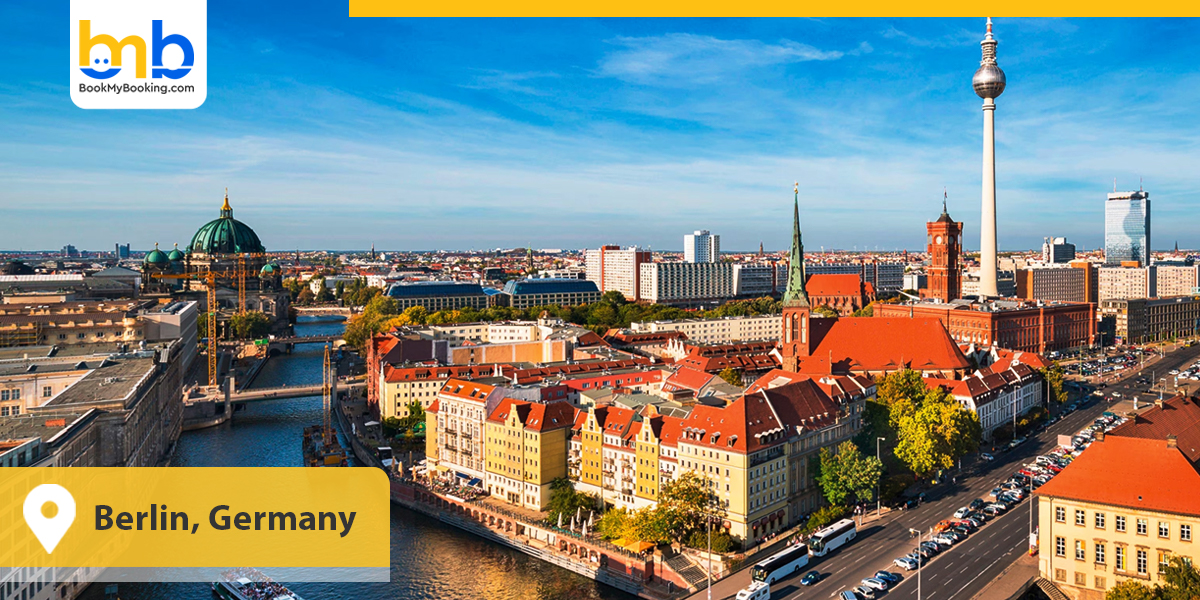
Berlin is a city that offers a unique blend of historical heritage and modern innovation. This place is a melting pot of diverse styles, ranging from historical monuments to modern urban planning, showcasing how design can be revitalised and evolved. The city's rich architectural tapestry and vibrant cultural scene provide endless inspiration for fresh perspectives and pushing design boundaries, as well as the growth of cultural and heritage tourism.
5. Marrakech, Morocco
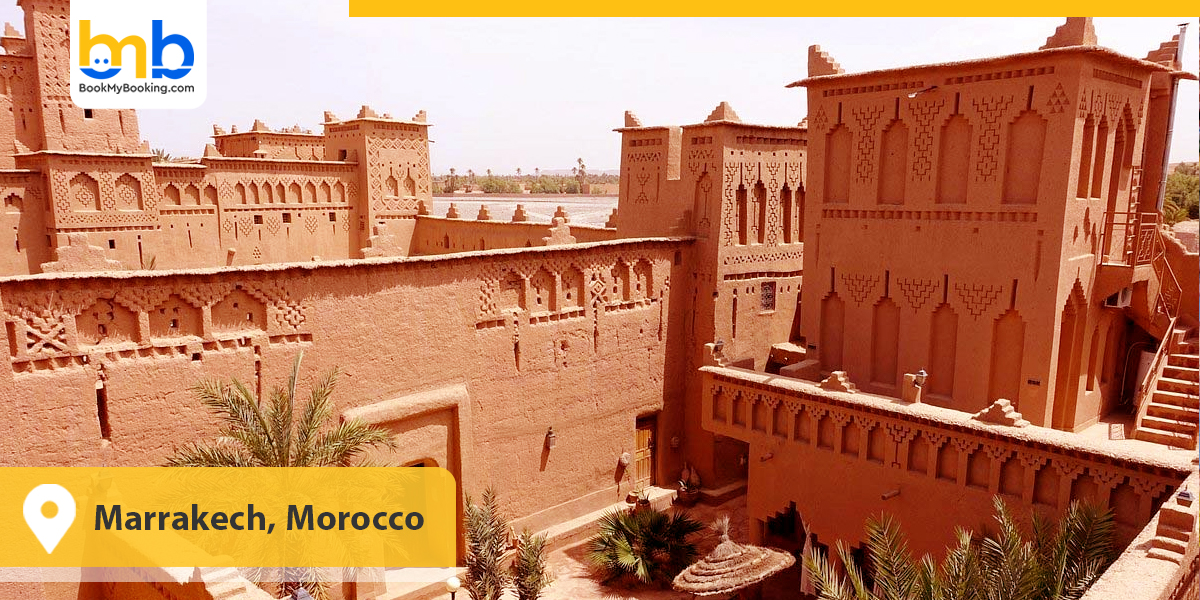
Being one of the most culturally rich and visually captivating destinations, Morocco is a place where history, craftsmanship and design beautifully merge. From the complex world of old Medinas in Tikal to the sculpture and desert Kasbah, every corner tells the story of tradition and art. The city is a blend of Islamic, Moorish, and Andalusian influences, resulting in ornate patterns, earth tones, and a unique aesthetic characterised by spatial harmony, making it an architectural wonder that attracts tourism. For architects, Morocco offers timeless inspiration where age-old techniques meet a deep respect for materiality, climate and culture.
6. Ahmedabad, India
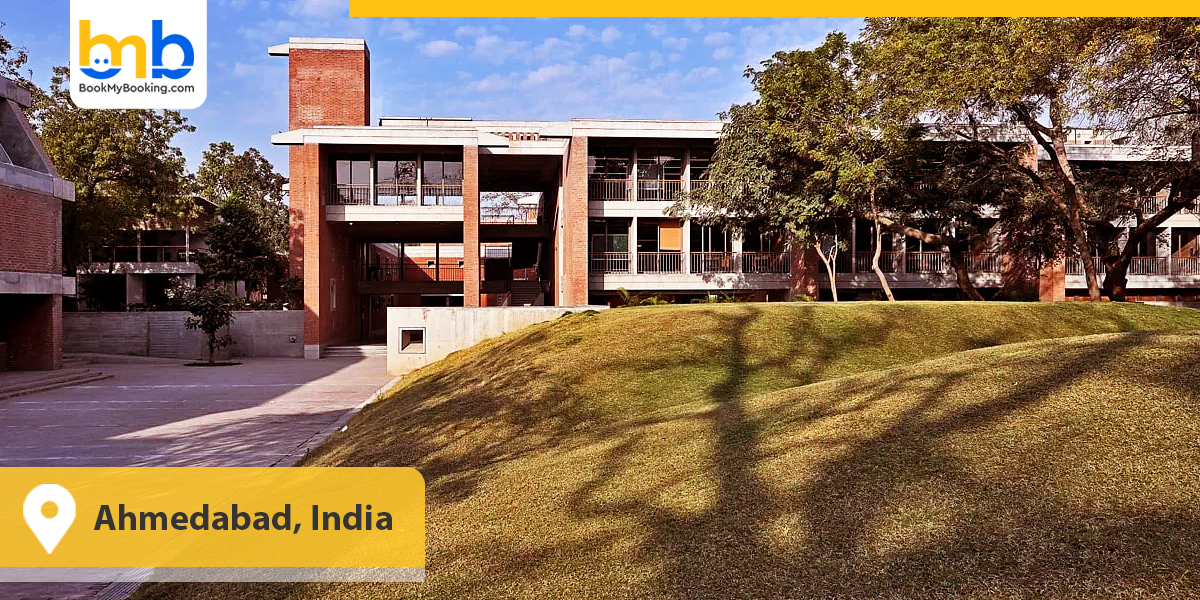
Rooted in traditions and home to the Indian Pritzker Prize-winning architect B. V. Doshi, the city is a vibrant fusion of heritage and evolving architecture. From well-known places like CEPT and Sangath to the narrow shaded lanes of the old town designed for the local climate, the city's old craftsmanship coexists with cutting-edge architecture. This interplay between the past and present makes the town an ever-evolving source of inspiration for architects promoting sustainable tourism in the architectural field.
7. Lisbon, Portugal

A city with layered beauty and creative development is a rich tapestry of the architectural tile aspects of Lisbon. The Gothic cathedrals and Baroque monuments were built on the basis of bold modern structures and adaptive reuse projects. From the complex Azulygos to the cultural hub of the Tagus River, the city offers a unique blend of history, crafts, and innovation to architects. Lisbon's evolving architectural tourism landscape and natural light make it a vivacious source of inspiration for those drawn to spaces that balance heritage with forward-thinking design.
8. Tokyo, Japan

One of the most futuristic cities, Tokyo is a place where innovative technology and design are of interest at every corner. The city continues to grow, featuring smooth skyscrapers alongside centuries-old temples and a compact yet bold architectural style. Here, the architects find infinite inspiration in the way of taking urban clothes to a limited place, which develops lifestyle and sophisticated modern architecture tourism trends. Tokyo not only creates a city, but also serves as a visionary blueprint for the future of architecture.
9. Burj Khalifa and Palm Jumeirah, Dubai

Dubai is a world hub of futuristic architecture, mixing luxury with engineering marvels. The Burj Khalifa, the world's tallest building, represents vertical innovation with Islamic design motifs and cutting-edge technology. The Palm Jumeirah, an artificial island shaped like a palm tree, reflects bold urban planning and visionary waterfront development. With its glass skyscrapers, dynamic skylines, and innovative landmarks, Dubai redefines the global landscape of architectural tourism.
10. Marina Bay Sands, Garden by the Bay, Singapore

Singapore blends futuristic innovation with eco-conscious design. Marina Bay Sands, dressed by a Sky Park with its three towers, is an engineering feat that symbolises modern luxury. The Garden at the Bay, with its massive structures and climate-controlled biomes, embodies a permanent architectural fusion with nature. The cityscape fuses colonial-era shophouses, glass skyscrapers, and green spaces, making Singapore's architectural marvels a model of architectural harmony between tradition and progress.
11. Statue of Liberty & Empire State Building, USA

New York's architectural landmarks blend iconic symbols and soaring innovation. The Statue of Liberty, with its Neoclassical design by Frédéric August Bartholdi, represents freedom and crafts. The Empire State Building, an Art Deco masterpiece, symbolises the ambition of 1900s skyscrapers. From Gothic revival structures, such as St. Patrick's Cathedral, to the World Trade Centre, the architectural landmarks in New York showcase the diverse cultural and historical identity of the city.
12. Pyramids, Islamic Cairo
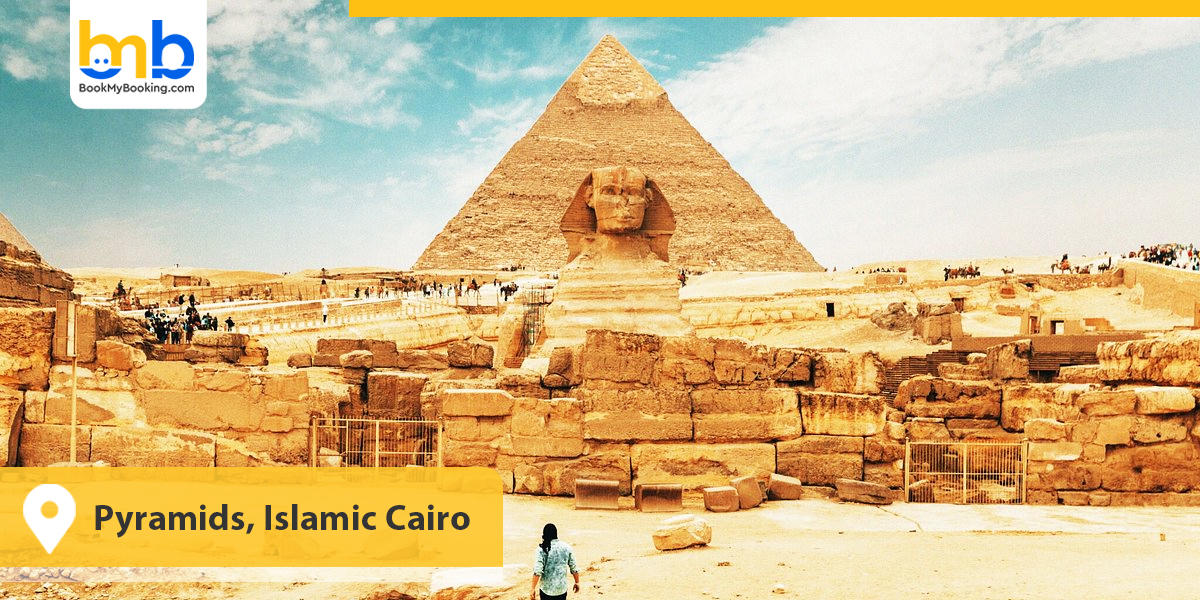
Cairo's architecture spans from ancient to the Islamic Golden Age. Cairo's architecture spans from ancient to the Islamic Golden Age. The Pyramid of Giza showcases memorial Engineering with accurate adjustment and timeless construction techniques. On the other hand, Islamic Cairo is decorated with mosques, madrasas, and towers, including the Great Mosque of Muhammad Ali. Together, these architectural landmarks for tourists embody Egypt's architectural evolution—from the mysteries of pharaonic design to the intricacies of Islamic artistry and craftsmanship.
13. Hagia Sophia, Blue Mosque, Istanbul

The Hagia Sophia and the Blue Mosque are Istanbul’s most iconic architectural treasures, reflecting the city’s fusion of Byzantine and Ottoman grandeur. Hagia Sophia, renowned for its massive dome and mosaics, embodies centuries of religious and cultural evolution. Opposite it, the Blue Mosque dazzles with six minarets, cascading domes, and intricate İznik tiles. Together, these landmarks symbolise Istanbul’s timeless role as a crossroads of civilisations and architectural brilliance.
14. Rajasthan, India
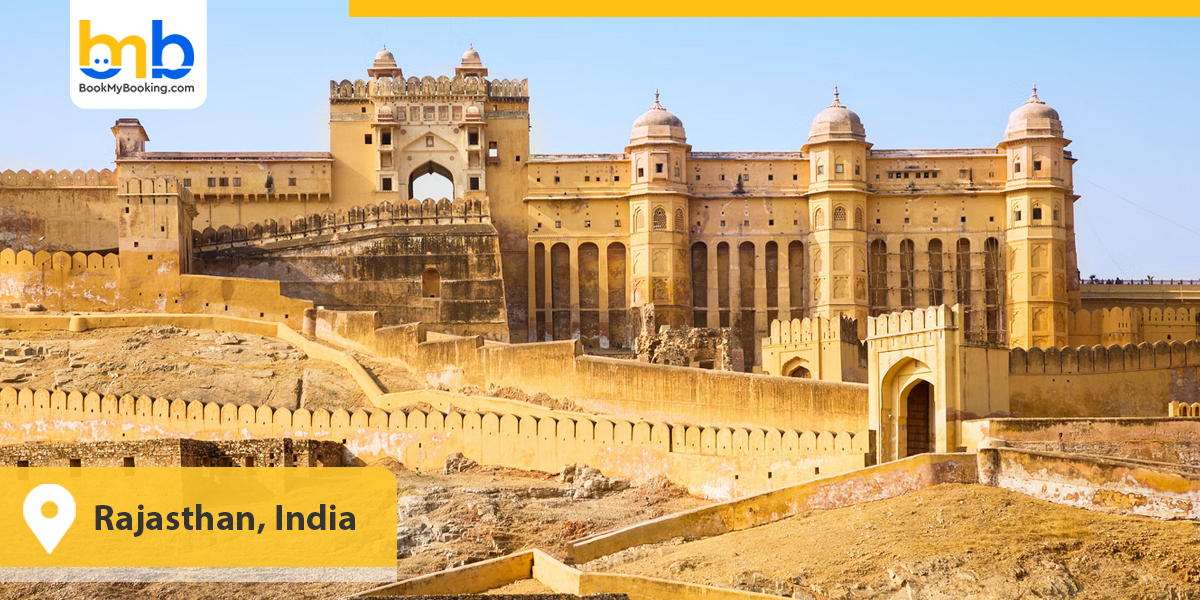
Rajasthani cities such as Jaipur, Jodhpur, Ajmer, Udaipur, Jaisalmer, and others are renowned worldwide for their impressive forts, offering every tourist a unique architectural travel experience. The main features here are forts with finely carved walls and ceilings, beautiful courtyards, magnificently built entry gates, and bright murals of rulers on the palace walls. The palaces will astonish you with their historic décor, one-of-a-kind artworks, sparkling mirrors, and ornate tilework. Havelis in Rajasthan are recognised for their distinct designs and intricately carved sandstone facades, latticed balconies, and inner walls covered with mural painting.
15. Goa, India

Goa boasts a diverse array of architectural wonders that attract tourists. Buildings in Goa are a fusion of styles, innovation and details from the blending of cultures. Although Goa has a rich heritage dating back ot before the arrival of the Portuguese, this meeting resulted in culture and architecture that is significant. The Portuguese baroque style was used to build many of the colonial Catholic churches in the 16th and 17th centuries. Most of the historic home structures remaining were constructed in a blend of Neoclassical and Gothic Revival styles. Goa, one of the best cities for architectural tourism, is home to some of the most aesthetically pleasing churches, houses, and forts.
16. Prague, Czech Republic
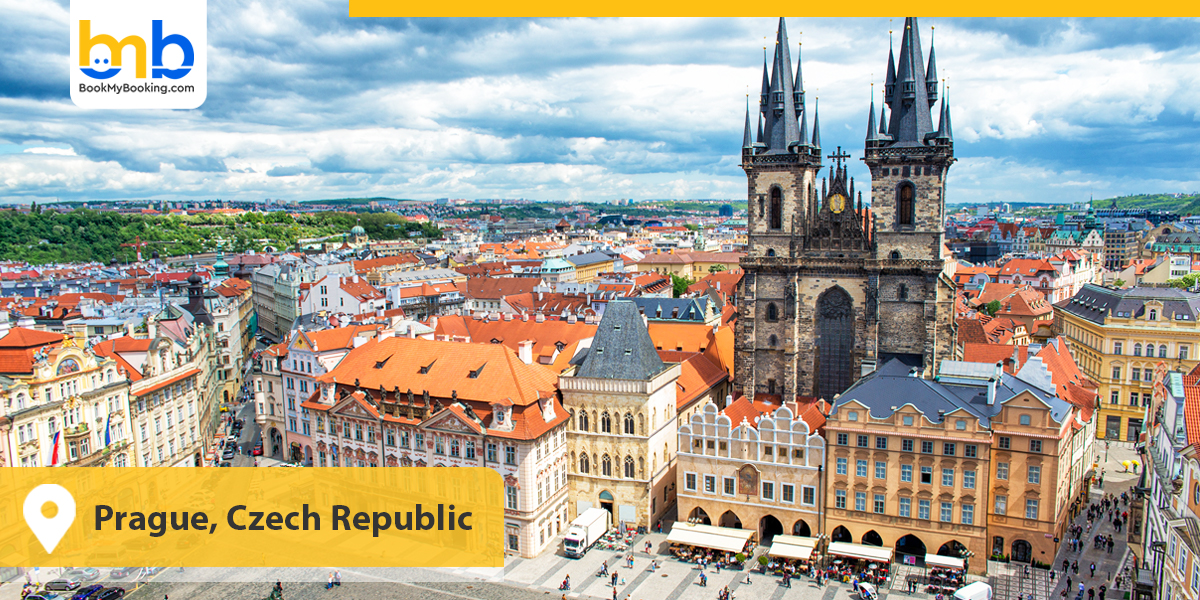
Prague is a city where every street feels like you have stepped back in time. The city's architectural diversity is remarkable, featuring the harmonious coexistence of Romanesque, Gothic, Baroque, and Renaissance styles. Charles Bridge, with its Gothic towers, and Prague Castle, which is the largest ancient palace in the world, must be them. The architectural and cultural tourism of Prague is a journey through history, with each building telling its own story.
17. Brasilia, Brazil

Brasilia is a city that was born from a vision of modernity. Curated by the Brazilian architect Oscar Niemeyer, the city is a masterpiece of modernist architecture. Brazil's architect Oscar Niemeyer is an excellent example of modernist architecture. There are examples of Niemeyer’s talent, such as the cathedral in Brazil, with its crown-like structure and the smooth, futuristic design of the National Congress Bhavan, which promotes modern architecture tourism trends. Brazil is a city that challenges traditional architectural criteria and stands as a testament to innovative design.
18. Athens, Greece

Athens is the cradle of Western civilisation and is a city immersed in history. The Acropolis, with the Parthenon at the top, symbolises ancient Greek architecture and is the birthplace of classical architectural principles. Other ancient places in the city, such as the Temple of Olympian Zeus and the Temples in the Agora, give a glimpse of the ancient Greeks' architectural skills. Athens is a destination where history and architecture are inextricably linked, underscoring the significant role architecture plays in tourism.
19. Istanbul, Turkey

Istanbul, situated at the crossroads of two continents, is a city where East meets West, a fact reflected in its rich architectural heritage and tourism growth. The Hagia Sophia, once a church, then a mosque and now a museum, is an excellent work of Byzantine architecture. The Blue Mosque, with its cascading domes and towers, and the Topkapi Palace, the grand residence of Ottoman Sultans, are its main attractions. Istanbul is a rich tapestry of history and culture, promoting the importance of architectural tourism.
20. Rome, Italy
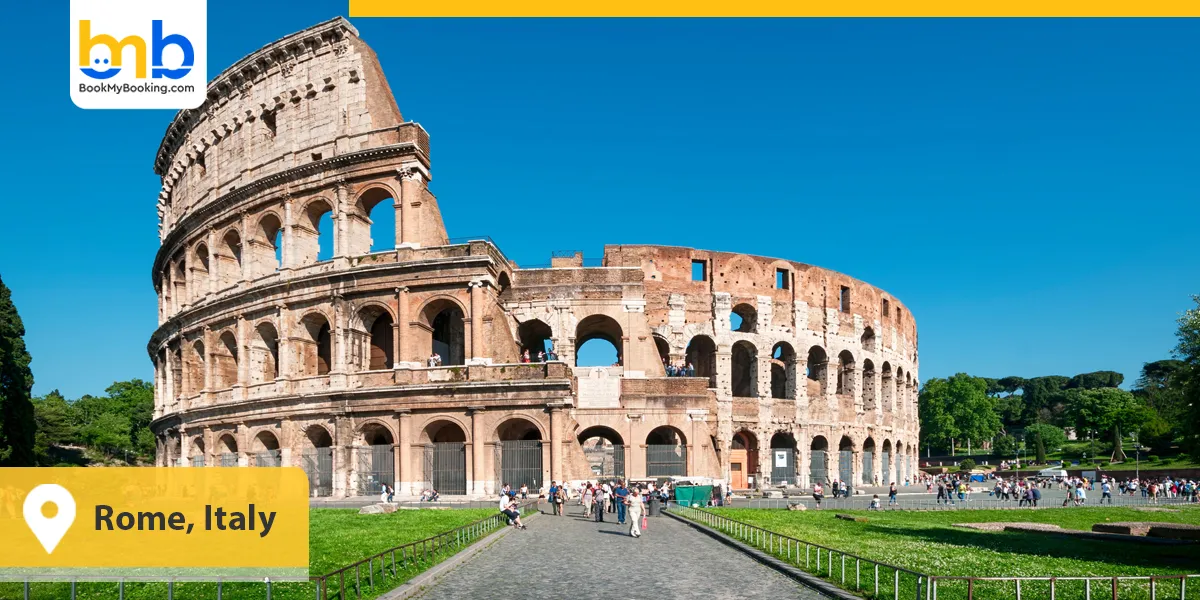
The eternal city is a treasure of architectural miracles that has been for centuries. The complex details of the Pantheon, alongside the greatness of the Colosseum, make Rome a living museum of ancient architecture. The baroque period, exemplified by the city's St. Peter's Basilica and the Trevi Fountain, adds another layer of beauty. Rome is a place where history and architecture offer endless, endless inspiration.
Architecture in Sustainable Tourism

Architecture plays a crucial role in sustainable tourism by incorporating environmentally friendly designs, renewable materials, and energy-efficient technologies into buildings and spaces. Green architecture reduces the environmental impact by increasing visitor experiences through harmony with natural surroundings. Examples include eco-loz, solar-driven resorts and structures produced using local resources. Permanent architecture not only preserves cultural heritage but also promotes a responsible journey by forming a balance between development and protection. By combining aesthetics, functionality and stability, architecture in sustainable tourism supports long-term environmental goals, strengthens local communities and creates immersive travel experiences that do not compromise the ecological integrity of destinations.
Benefits of Architectural Tourism
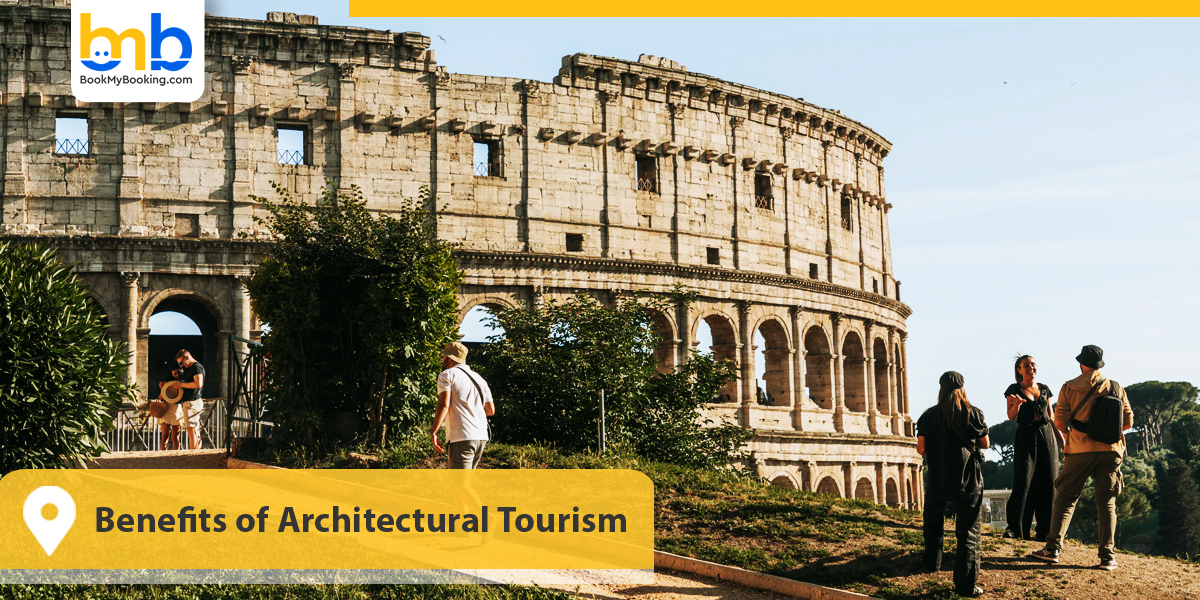
The benefits of Architectural tourism range from cultural enrichment to economic growth. It presents the inheritance by motivating the conservation of historical sites and showcases human creativity throughout the ages. Tourists gain educational insight into design, engineering and traditions, making the journey more meaningful. Economically, the local businesses, hospitality and craftsmanship produce jobs and income. The iconic architecture increases global recognition and converts destinations into cultural symbols. In addition, architectural tourism promoted cross-cultural appreciation, social pride, and sustainable practices by highlighting both historic monuments and modern eco-conscious designs.
Future of Architectural Tourism
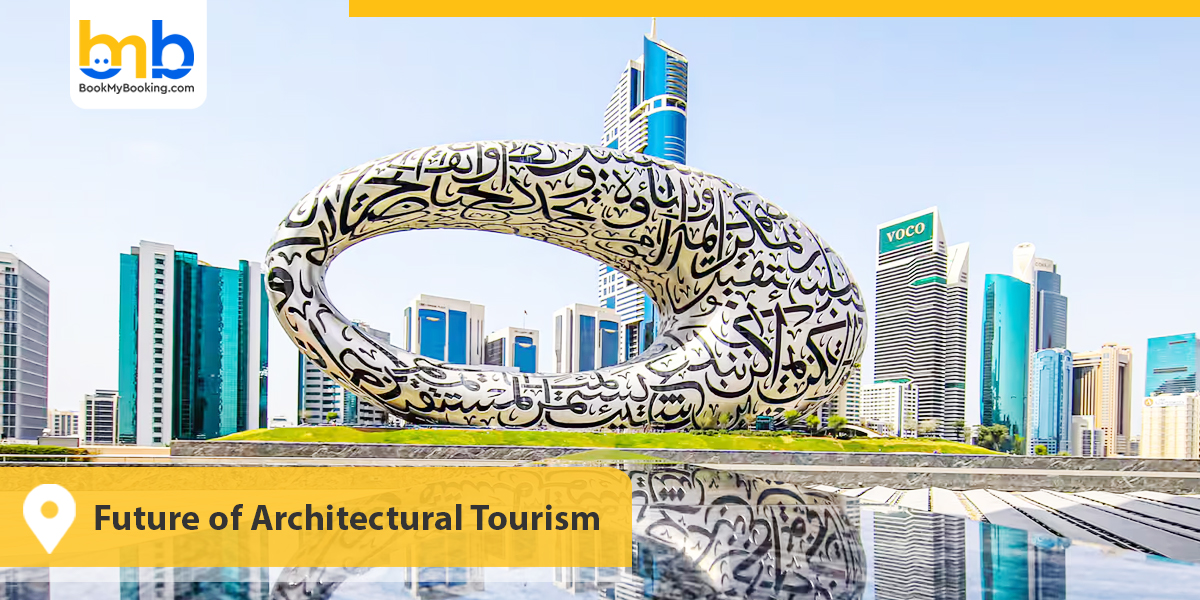
The future of architectural tourism lies in a combination of cultural protection with innovation and stability. Smart, urban, and environmentally conscious designs will attract travellers seeking modern miracles, complementing traditional websites. Like digital technology, virtual and augmented reality will enhance experiences by bringing historical architecture to life. Climate-north and green buildings will redefine destinations and combine with global stability goals. Since travellers prefer authentic, engaging, and environmentally friendly journeys, architectural tourism will evolve to strike a balance between cultural heritage and future design, which is a testament to modern architecture tourism trends. This synergy will continue to generate global interest, which will not only become a tourist attraction but will also provide a route for a responsible journey.
How architecture shapes travel experiences

The architectural depth shapes how passengers see and connect to destinations. The Burj Khalifa, not the Ophir Tower, defines the city's symbols and influences travel options. Historical structures immerse visitors in cultural stories, while modern design makes innovation and progress. The atmosphere created by squares, roads, and monuments fosters an emotional connection and a sense of history. Architecture tourism also determines functionality through hotels, museums, and urban designs, creating experiences that are uninterrupted and memorable. Whether ancient temples, futuristic skyscrapers, or eco-resorts inspire architecture, promote cultural understanding, and transform regular trips into extraordinary journeys that leave a lasting impression on travellers.
Final Takeaway
Modern Architectural tourism trends are the soul of destinations, shaping cultural identity, stability, and the visible experiences that define them. From ancient monuments to futuristic marvels, it drives tourism, preserves its heritage, and inspires awe. As travellers seek a meaningful journey, architectural tourism will continue to thrive, balancing history, innovation, and global cultural acclaim.


